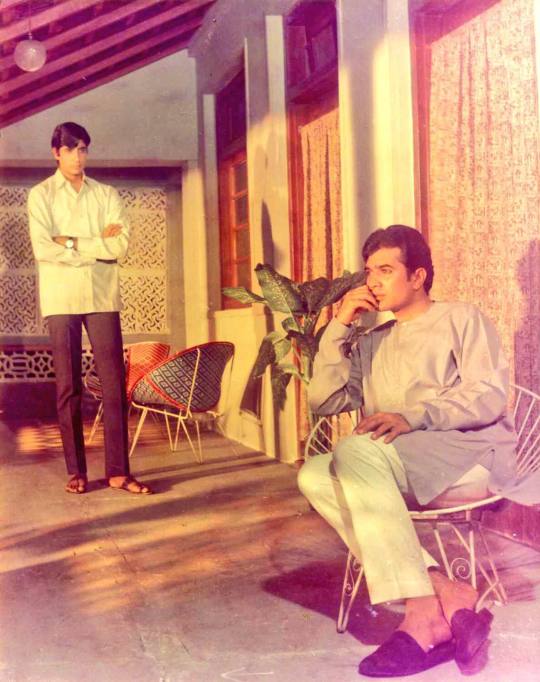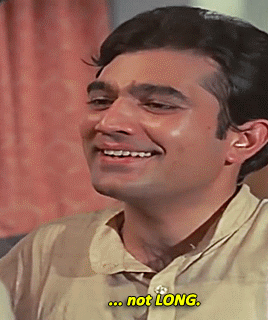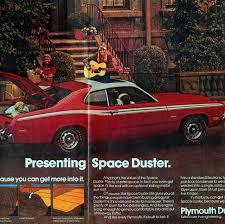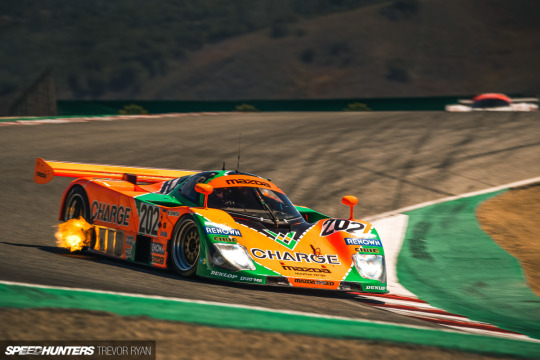#anand 1971
Explore tagged Tumblr posts
Text
"aaj meri mulaqat ek anand shegal se hui. aisa laga, jaisi ki koi toofan meri zindagi mein ghus aaya."
def not gay™
1 note
·
View note
Text

53 years of #Anand (12/03/1971)
"Kahin Door Jab Din Dhal Jaye, Sanjh Ki Dulhan Badan Churaye Chupke Se Aaye, Mere Khayaalon Ke Aangan Mein, Koi Sapnon Ke Deep Jalaaye"
A must-watch among #HrishikeshMukherjee's masterpieces is the movie 'Anand,' starring #RajeshKhanna and #AmitabhBachchan in the lead roles. The screenplay was a collaborative effort by Bimal Dutta, #Gulzar, D.N. Mukherjee, Hrishikesh Mukherjee, and Biren Tripathy. Music by Salil Chowdhury The lyrics were penned by #Gulzar and Yogesh, with #Gulzar also writing the poignant poem 'Maut Tu Ek Kavita Hai,' which is narrated by Amitabh Bachchan. What are your favorite songs or dialogues from the movie?
What are your favourite songs/dialogue from the movie?
#bollywoodirect#bollywood#Anand (1971)#amitabh bachchan#rajesh khanna#hrishikesh mukherjee#gulzar#yogesh#d. n. mukherjee#biren tripathy#bimal dutta#salil chowdhury
8 notes
·
View notes
Text


"Babu Mushoi, zindagi badi honi chahiye ... lambi nahin" - Anand (1971)
#bollywood#bollywood2#anand#rajesh khanna#rajeshkhanna#cinema#hindi#dailyworldcinema#fyeahmovies#india#mine#indian cinema
257 notes
·
View notes
Note
omg top ten bollywood movies? (answer when you are free!!!!)
how DARE YOU ANON ok im gonna make a list in chronological order of release with no explanation or else it will be kilometre long post
Anand (1971)
Sadma (1983)
Paheli (2005)
Udaan (2010)
7 Khoon Maaf (2011)
English Vinglish (2012)
The Lunchbox (2012)
Kai Po Che (2013)
Go Goa Gone (2013)
Hasee Toh Phasee (2014)
Haider (2014)
Dil Dhadakne Do (2015)
Dum Lagake Haisha (2015)
Aligarh (2015)
Masaan (2015)
NH10 (2015)
Udta Punjab (2016)
Kapoor & Sons (2016)
Dear Zindagi (2016)
A Death in Gunj (2016)
Bareilly Ki Barfi (2017)
Meri Pyaari Bindu (2017)
Phillauri (2017)
Badhaai Ho (2018)
Mard Ko Dard Nahi Hota (2018)
ofcourse i went over the limit lmao. also obviously these aren't all of my favourite films, these aren't even probably the most but only those i remember on top of my head because ive seen so many movies its hard to keep track of all 😭
42 notes
·
View notes
Text
Price: [price_with_discount] (as of [price_update_date] - Details) [ad_1] Hindi cinema, often metonymously referred to as Bollywood, is the Indian Hindi-language film industry, based in the city of Mumbai, Maharashtra, India. Whether you're a fan of romance, tragedy, or comedy, there's definitely a film for you in this colorful world of Bollywood. Here's, a list of Bollywood staples that you need to add to your poster collection, from epic historical dramas to kickass action movies. About TallengeStore:The Tallenge Store is India's No 1 online art store where thousands of visitors purchase artworks and photographs for home interior decoration, office decor, gifting to friends and family for housewarming, wedding and other occasions. Anand is a 1971 Indian Hindi-language drama film co-written and directed by Hrishikesh Mukherjee, with dialogues written by Gulzar. It stars Rajesh Khanna in the lead role, with a supporting cast including Amitabh Bachchan, Sumita Sanyal, Ramesh Deo and Seema Deo We offer multiple combinations across Materials (canvas/paper) and Frames (Unframed/Framed) , which you can select from the 'SIZE' option above. Final Size : 12 x 17 inches [ad_2]
0 notes
Text
Gujarat to Build Operation Sindoor Memorial Park Near Pakistan Border in Kutch
The Gujarat government has announced plans to build a special memorial park near the India-Pakistan border in Kutch to honor the bravery of Indian forces during Operation Sindoor, a recent military response to cross-border attacks.
The park, named ‘Sindoor Van’, will be developed on eight hectares of land in Mirzapar, along the Bhuj-Mandvi road. This area holds historical significance as it hosted Prime Minister Narendra Modi’s public meeting on May 26, shortly after Operation Sindoor.
Kutch District Collector Anand Patel said, “Sindoor Van is being developed to honor the courage of the Army, Air Force, BSF, and the unity shown by citizens during Operation Sindoor.”
A Forest-Themed Park with Symbolic Plants
The park will be created as a dense green space or micro forest featuring around 10,000 plants per hectare. A variety of herbs, shrubs, and trees, about 35 species, will be planted, with the Sindoor plant being the most prominent. This plant symbolizes strength and sacrifice.
“This will be one of the densest forests in Bhuj,” said Sandeep Kumar, Chief Conservator of Forests, Kutch. “The park will also have dedicated areas for the Army, Air Force, Navy, and BSF, with murals and displays showcasing their efforts during Operation Sindoor.”
A special section of the memorial will be dedicated to the victims of the April 22 Pahalgam terror attack. Among the 26 victims, three were from Gujarat, and this space will serve as a tribute to them.
Prime Minister’s Special Connection
During his visit to Bhuj, Prime Minister Narendra Modi was gifted a Sindoor plant by women from Madhapar. These women had once played a crucial role in repairing the Bhuj airbase runway within 72 hours during the 1971 war. The Prime Minister said he would plant the gift at his residence, where it would grow into a banyan tree, symbolizing strength and endurance.
Operation Sindoor was India’s strong response to more than 600 missile and drone attacks launched from across the border. According to Abhishek Pathak, Inspector General of BSF’s Gujarat Frontier, about 40% of the attacks were in Gujarat, especially in the Bhuj region, while the rest hit the Barmer area in Rajasthan. Security forces were able to successfully stop all of these attacks.
Memorial Park to Be Ready in 18 Months
The Sindoor Van project is expected to be completed in a year and a half. Once ready, it will not only honor the brave but also become a green landmark symbolizing India’s unity, strength, and commitment to peace.
#werindia#leading india news source#top news stories#top news headlines#national news#top news of the day#latest national news
0 notes
Text
Blog Entry #1
Key components of the Bollywood film industry
This blog is designed to inform the audience about the Bollywood film industry. I will be creating 5 different blog entries that discuss and go into detail about information on the Bollywood film industry and its importance. This week’s blog will be an overview of the key components of the Bollywood film industry.
The Bollywood film industry began in the 1930’s in Mumbai and then developed into a big film empire which expanded tremendously throughout the upcoming years. Bollywood films are widely known for “their emotional appeal, spectacular use of music and dance, and contribution to Indian popular culture.” (Bollywood, 2025). The golden age of the Bollywood film industry was from the 1940’s to the 1960’s. During the Golden age, some of the most popular stars were Raj Kapoor, Dilip Kumar, and Dev Anand, Meena Kumari, Madhubala, and Nargis. “superstar” was a term that was first used to describe the actor Rajesh Khanna. He was featured in 15 consecutive popular films between 1969 and 1971.
Bollywood films have a very big fanbase all around the world. In the recent years Bollywood films have been available to watch on popular streaming services like Netflix and amazon. This allows people all around the world to watch and enjoy the Bollywood film industry. Bollywood films are so loved due to the amount of culture within the movie. The fashion, music, and dancing in Bollywood films are seen by so many people and has attracted tourists from all around the world. IMBD ranks the 35 Bollywood movies. Out of the 35 movies, the top three that are ranked as the most popular are 3 idiots directed by Rajkumar Hirani, Lion directed by Garth Davis, and Padmaavat directed by Sanjay Leela Bhansali.
At the turn of the 21st century, Bollywood was producing 1000 feature films annually. These movies were produced in all of India’s major languages and also in multiple cities. During this time, the representation of women in Bollywood had progressed. It started to come out that both male and female actors were speaking out about being pressured into exchanging sexual favors for roles. The Me Too Movement started to become big in Hollywood around 2017 started to make its way to India where multiple actors and actresses spoke up about experiences that they had.
One of the most important characteristics of Bollywood films is the use of music and dance in their films and the effectiveness of them. These are two aspects of the movies that bring in the attention from the audiences. Most of the famous actresses in popular Bollywood films have been skilled dancers. The most iconic production in the Bollywood industry is called Sholay and was directed by Ramesh Sippy. Bollywood has expanded all over the globe. Some of the most popular actors such as Shashi Kapoor and Priyanka Chopra Jonas have been in movies have crossed over to international cinema. Recently, Bollywood has been eclipsed by the South Indian film Industry. Along with this, the Bollywood film industry is also facing competition from streaming services such as Netflix which leads to a decline in ticket sales in cinemas. The Bollywood film industry has been trying to adapt to these challenges by creating films for streaming services.
Bibliography
Chloe. (2024, December 11). Indian cinema: Bollywood’s impact and Regional Film Industries. Moments Log. https://www.momentslog.com/culture/indian-cinema-bollywoods-impact-and-regional-film-industries
Encyclopædia Britannica, inc. (2025, April 9). Bollywood. Encyclopædia Britannica. https://www.britannica.com/topic/Bollywood-film-industry-India
IMDb.com. (n.d.). 25 best bollywood movies of All time. IMDb. https://www.imdb.com/list/ls031589895/?sort=popularity%2Casc
1 note
·
View note
Text
Mukesh’s Timeless Hits: Songs That Still Resonate
Mukesh Chand Mathur, better known simply as Mukesh, was an iconic playback singer whose voice became a cornerstone of Bollywood’s golden era. His ability to evoke deep emotions and connect with audiences through his heartfelt renditions set him apart from his contemporaries. From the 1940s to the 1970s, Mukesh’s songs captured the essence of Indian cinema, blending profound lyrics with his soulful voice.
This article delves into Mukesh’s journey, his rise to fame, and the legacy of timeless music he left behind.
Early Life and Musical Beginnings
Mukesh was born on July 22, 1923, in Delhi, into a middle-class family. As the sixth of ten children, Mukesh’s early life was marked by simplicity. He initially pursued a career in the public works department, but music was always a significant part of his life. His first exposure to music came through his sister, who was learning classical singing. Mukesh would often listen to her lessons from an adjacent room, inadvertently cultivating his passion for the art.
His big break came when a distant relative, actor Motilal, noticed his talent at a family wedding. Motilal brought Mukesh to Bombay (now Mumbai) and arranged for him to receive formal training in music under the guidance of Pandit Jagannath Prasad. These lessons laid the foundation for Mukesh’s entry into the world of Bollywood.
Mukesh’s Early Career: The Saigal Influence
Mukesh’s initial years as a playback singer were heavily influenced by the legendary K.L. Saigal. His first recorded song, “Dil Hi Bujha Hua Ho To,” in the 1941 film Nirdosh, did not garner much attention. However, in 1945, his song “Dil Jalta Hai To Jalne De” from Pehli Nazar brought him into the limelight. This melancholic tune struck a chord with audiences, showcasing Mukesh’s ability to convey deep emotions.
K.L. Saigal himself mistook Mukesh’s voice for his own, saying, “I don’t remember recording this song,” a testament to Mukesh’s early style. While this flattery was an honor for Mukesh, he soon realized the need to establish his own identity as a singer.
Finding His Unique Voice
The turning point in Mukesh’s career came through his collaboration with composer Naushad Ali. Naushad encouraged Mukesh to move away from imitating Saigal and develop his unique voice. This advice bore fruit in films like Andaz (1949), where Mukesh sang unforgettable songs such as “Toote Na Dil Toote Na.” The film starred Dilip Kumar, Nargis, and Raj Kapoor, marking the beginning of Mukesh’s legendary association with Raj Kapoor.
Mukesh’s voice became synonymous with Raj Kapoor’s on-screen persona, embodying the romanticism and vulnerability that Kapoor often portrayed. Their collaboration produced numerous hits over the years, cementing Mukesh’s place in Bollywood history.
Mukesh and Raj Kapoor: A Match Made in Musical Heaven
Mukesh’s career skyrocketed through his association with Raj Kapoor. Their partnership became one of the most iconic duos in Bollywood. Mukesh’s voice perfectly complemented Kapoor’s acting style, making songs like “Awara Hoon” (Awaara, 1951) and “Mera Joota Hai Japani” (Shree 420, 1955) instant classics.
Mukesh had an unparalleled ability to bring out the emotional nuances of Kapoor’s characters. Whether it was the playful optimism of “Awaara Hoon” or the melancholic introspection of “Jeena Yahan Marna Yahan” (Mera Naam Joker, 1970), Mukesh’s voice became the soul of Kapoor’s films.
Timeless Classics That Define Mukesh
Mukesh’s songs remain evergreen, cherished across generations. Some of his most celebrated tracks include:
“Kahin Door Jab Din Dhal Jaaye” (Anand, 1971): A poignant song that reflects on life and mortality, resonating deeply with listeners.
“Kabhi Kabhie Mere Dil Mein” (Kabhi Kabhie, 1976): A romantic ballad that showcases Mukesh’s ability to convey love’s intensity.
“Ek Pyar Ka Nagma Hai” (Shor, 1972): A song of hope and resilience, often regarded as one of Bollywood’s most inspirational tracks.
“Dil Se Teri Nigah” (Jahan Ara, 1964): A delicate melody that highlights Mukesh’s classical inclinations.
These songs not only defined Mukesh’s career but also became anthems for the emotions they represented.
Awards and Recognition
Mukesh’s contributions to Bollywood music were recognized with numerous accolades. He won the National Film Award for Best Male Playback Singer for “Kai Baar Yuhi Dekha Hai” (Rajnigandha, 1973). Additionally, he received four Filmfare Awards for songs like “Sab Kuch Seekha Humne” (Anari, 1959) and “Kabhi Kabhie Mere Dil Mein” (Kabhi Kabhie, 1976).
Despite his fame, Mukesh remained humble, crediting his success to the composers and lyricists who shaped his songs. His collaborations with legends like Shankar-Jaikishan, R.D. Burman, and Laxmikant-Pyarelal further enriched his repertoire.
The Tragic Loss and Enduring Legacy
On August 27, 1976, Mukesh suffered a heart attack while on a concert tour in Detroit, USA. His sudden demise left the Indian music industry in shock. However, his legacy lives on through his timeless music, which continues to inspire and move listeners.
Mukesh’s son, Nitin Mukesh, carried forward his father’s musical legacy, while his grandson, Neil Nitin Mukesh, ventured into acting. Mukesh’s impact extends beyond his family, influencing countless artists and fans across the globe.
Conclusion
Mukesh soulful voice and emotive renditions earned him a permanent place in the hearts of music lovers. His songs transcend time, continuing to evoke joy, love, and melancholy in equal measure. From the streets of India to international concert halls, Mukesh’s music remains a testament to his unparalleled artistry.
Discover Mukesh’s timeless classics on music streaming platforms and revisit the golden era of Bollywood. Share your favorite Mukesh songs with friends and family to celebrate the legacy of this unforgettable voice.
0 notes
Text
The Rise and Fall of the Golden Era of Japanese Sports Cars
Name: Manav Anand
Student ID: 55378875
I love cars. Particularly Japanese sports cars from the late 80’s and early 90’s. As I learned more and more about economics, I began to learn how heavily the economy was responsible for the rise and fall of the sports cars I love so much. Here I will describe the economic events which had a cascading effect on the Japanese car industry from the early ‘70s to late ‘90s, and car culture today. The story begins with underdog Japanese automakers competing against the oligopoly of the "Big 3" American car companies and dominating in the midst of a global gas crisis. Flush with cash, alongside a strong domestic economy, Japanese carmakers poured their heart and soul into engineering exciting sports cars and insane race cars, pioneering new technology and facing off against European racing legends. Finally, a decline in the Japanese economy and changes in import law led automakers to end sports car development, marking the end of a “golden era” of Japanese sports cars.

Part 1: Oil crisis
The 1973 oil crisis was caused by the total embargo of oil to the United States (among other countries) which caused significantly higher gas prices and gasoline shortages. Due to a price ceiling on oil imposed in 1971, it was more profitable to import cheap oil to secure a larger profit. Subsequently, By 1972, more than 80% of the oil in the United States was imported, leading to a devastating reduction in supply when the embargo came. The quantity sold became extremely low, and the equilibrium price of gasoline shot up. A second oil crisis (different cause, similar effect) also happened in 1979, and famous pictures from this time show how severe gas shortages had become throughout the late 70s.
These repeated gas crises caused a demand for more fuel efficient cars, and small, efficient Japanese imports were the solution to the demand. Combined with a better perception of the quality of Japanese vehicles, the efficient, practical imports had begun to dominate the existing oligopoly of “Big Three” American car manufacturers Ford, Chrysler and GM. The Big 3 struggled to match the quality and efficiency of Japanese cars, and spent the next few years playing catch-up to win back their share in the overall US car market. These firms were engaged in monopolistic competition, and Japanese firms had entered and began securing short-run profits. The Big 3 companies had actually set up their financial downturn, as they had spent their money on marketing and production of big cars while ignoring the market's desire for compact cars. The Japanese automakers focused on what the market wanted, making cars which provided maximum utility to US consumers. Comparing car advertisements from the 1970s clearly shows this ideology difference. The American companies inability to satisfy the demands of US consumers led to them being outsold by firms that could, showing how even massive corporations must abide by economic fundamentals, or face massive failure.


As if there weren’t enough things going well for the Japanese in the ‘70s and ‘80s, the dollar-to-yen ratio allowed the Japanese imports to be profitably sold at much lower prices than Domestic vehicles, further increasing the competitiveness of Japanese Imports in America. Even the Japanese government played a hand, identifying how critical the automobile industry was to the economy, and taking measures to financially support its growth. The extreme success of the 70’s, along with a booming Japanese economy due to smart governmental decisions, leads us to the golden era of Japanese sports cars.
Part 2: The Golden Era
Flush with cash, consumer demand for luxury goods in Japan skyrocketed, and automakers were happy to spend their extra money on expensive R&D for sports cars, leading to the introduction of turbochargers for increased power, electronically adjustable suspension, Adjustable aerodynamics and more. It is often said that the easiest way to make a small fortune in racing, is to start with a large fortune. It is also often said "Win on Sunday, Sell on Monday" Referring to how even if automakers lost money by racing, racing success would be powerful marketing for the firm. We can see in the RX-7 advertisement how directly Mazda used their racing pedigree to market their vehicles. Racing is expensive, and Japanese automakers had the resources to race in the big leagues. Japanese automakers succeeded in the racing world, with not just good performances, but dominating ones.

The Calsonic Nissan R32 Skyline, entered in the Australian Touring Car Championship won every race it was entered in for 3 seasons. Its performance was so unbelievable, it permanently earned the Skyline GTR the nickname “Godzilla”. Consumers could purchase street-going versions of these cars, and enjoy the racing technology for themselves. The all wheel drive system was so advanced for its time, that even today, car enthusiasts continue to modify and use this system in their custom, high performance vehicles.

Honda had devoted its resources towards Formula 1, and from the years of 1987-1991, won 5 consecutive constructor and driver’s championships alongside the Mclaren and Williams Racing Teams. Developing just one Formula one race engine costs extraordinary amounts of money. Interviews with Nigel Mansell, who drove Honda-powered Williams cars from 1985 to 1987, revealed that Honda were making and developing 4 to 6 totally different engines in a single season during this time.

Outside of racing, Honda was developing the Honda NSX (Also known as the Acura NSX, as the NSX was used to launch the Acura Brand). The Honda NSX was a mid engined sports car intended to compete against automakers like Ferrari and Lamborghini. The desire for a lightweight chassis led to the development of the aluminum chassis, which paved the path for aluminum manufacturing in automobiles for years to come. The famous racing driver Ayrton Senna, who was driving for McLaren/Honda in F1 at this time, was consulted for input on the handling and chassis.

Until the NSX, consumers were forced to put up with temperamental Italian exotics if they wanted a super car; They were hot, noisy, and cramped, with a plethora of mechanical issues and oversights. The Honda NSX, in contrast, was reliable, comfortable, and practical. The Honda NSX was a newcomer to the supercar scene, and completely shifted the market; If Honda could do it, why didn't all the other manufacturers do it? The Honda NSX went on to sell well, and gain celebrity status, being regarded as one of the greatest sports cars to ever exist due to its practicality combined with amazing handling. Even as the NSX aged, its accomplishments were so great, that It stood as the benchmark for another one of the greatest sports cars to ever be made. The Mclaren F1 was the first "hyper car", a car that truly had no limits or constraints, other than to be the very best. It held the automoblie top speed record for 24 years. Its designer, Gordan Murray said: "The moment I drove the 'little' NSX, all the benchmark cars–Ferrari, Porsche, Lamborghini–I had been using as references in the development of my car vanished from my mind,"

Mazda had been competing in endurance racing, slowly trying to win Le Mans in a car powered by their signature Wankel Rotary Engine. In 1991, the team drivers were told to drive all-out, forgoing the usual conservative racing strategy employed by teams to ensure that the cars would survive to cross the finish line after 24 hours of racing. The car’s superior fuel efficiency meant the car could stop for fuel less often over the course of the race, and the superior reliability of the engine displayed in earlier racing meant that drivers could push the engine to its limits. The engine was so reliable, that after winning the race, covering 3,000 miles at an average speed of 128 mph, Mazda engineers said that the engine was in condition to complete another race with nothing more than an oil change. The money spent on R&D during this time allowed for innovation of technologies in the harshest conditions an automobile could be subject to, and these technologies would slowly be developed into the technology we have today.
Part 3: Where Did it All go?

The golden era of sports cars, fueled by the success of efficient, practical and reliable Japanese cars would have to come to an end eventually. Economic conditions began to decline in Japan, meaning that cars had to be sold at much higher prices abroad for profits to be made. Domestically in Japan, consumers did not have expendable income to spend on sports cars. The increase in the price of imports led to a decline in the units sold overseas, and changes to import law made this decline even more severe. Automakers would have to spend additional resources to comply with different US safety and emissions standards. Automotive manufacturers finished development of one final generation of sports cars in the late 90’s, and took their focus away from sports car development.
Although the era is now long in the past, the cultural influence of these cars is undeniable. The children who grew up watching Fast and Furious are finally old enough to buy the sports cars they saw on the big screen. Automakers are now once again developing fun, sports cars, but for many people, they simply do not scratch the same itch. New cars cannot replicate the analogue feeling, as modern technology trades driving experience for electronic convenience. Gone are the days where a teenager could work part time and buy a new sports car for themselves, and instead younger generations are scooping up old Japanese cars instead. Despite 30+ years of advancement, many car enthusiasts consider modern sports cars as inferior to the classics, and demand has skyrocketed accordingly. Legendary sports cars such as the Nissan Z, Mazda Miata, Toyota Supra, Honda Civic Type R and Acura Integra have all made a comeback with new, modern interpretations of the sports car formula, but are still often overshadowed by their older counterparts at car meets and shows. The famous 25-year import rule means that the dwindling supply of cars domestically cannot be replenished with cars from abroad.
The economic forces which guide the capitalistic world we live in are strong and relentless. While countless firms have collapsed into financial ruin, Japanese auto firms made a series of extremely wise economic decisions which allowed them to experience massive growth and the ability to show the world what they were capable of. Japanese automakers didn’t simply succeed as firms in this time period, they established themselves as a force to be reckoned with. They took on almost every other auto manufacturer across all types of vehicles, and showed them that they had fallen complacent in creating products that consumers actually demanded. Their achievements and design still stand strong today, delivering experiences yet to be replicated.

Sources Used:
https://www.roadandtrack.com/car-culture/a28632/acura-nsx-mclaren-f1-gordon-murray/
https://scholarworks.uni.edu/cgi/viewcontent.cgi?article=1030&context=draftings
https://www.wardsauto.com/news-analysis/energy-crisis-aided-japanese-imports
0 notes
Text
nahhh anand clocked him DEAD ON 💀 "you're angry because you cannot treat me not because im gonna die"
he may sound all jolly and easygoing but hes no idiot
1 note
·
View note
Text
rlly hypocritical of me to rb that narrative foils as shipping fodder post as a paromukhi and anand x bhaskar shipper. i literally added Anand 1971 as a good example of gay shipping when those two are like the definition of narrative foils. Literally the mean x sunshine trope. Anyways I need to read posts better.
0 notes
Text
Top 5 @Wikipedia pages from a year ago: Tuesday, 21st February 2023
Welcome, laipni lūdzam, 欢迎 (huānyíng), добредојде (dobredojde) 🤗 What were the top pages visited on @Wikipedia (21st February 2023) 🏆🌟🔥?

1️⃣: The Last of Us (TV series) "The Last of Us is an American post-apocalyptic drama television series created by Craig Mazin and Neil Druckmann for HBO. Based on the video game franchise developed by Naughty Dog, the series is set twenty years into a pandemic caused by a mass fungal infection, which causes its hosts to transform..."
2️⃣: Pathaan (film) "Pathaan (pronounced [pəʈʰaːn]) is a 2023 Indian Hindi-language action thriller film co-written and directed by Siddharth Anand and produced by Aditya Chopra under Yash Raj Films. The fourth installment in the YRF Spy Universe, it stars Shah Rukh Khan in the title role, alongside Deepika Padukone and..."
3️⃣: Ant-Man and the Wasp: Quantumania "Ant-Man and the Wasp: Quantumania is a 2023 American superhero film based on Marvel Comics featuring the characters Scott Lang / Ant-Man and Hope Pym / Wasp. Produced by Marvel Studios and distributed by Walt Disney Studios Motion Pictures, it is the sequel to Ant-Man (2015) and Ant-Man and the Wasp..."
4️⃣: Jimmy Carter "James Earl Carter Jr. (born October 1, 1924) is an American politician and humanitarian who served as the 39th president of the United States from 1977 to 1981. A member of the Democratic Party, Carter was the 76th governor of Georgia from 1971 to 1975, and a Georgia state senator from 1963 to 1967...."

Image by Department of Defense. Department of the Navy. Naval Photographic Center
5️⃣: ChatGPT "ChatGPT (Chat Generative Pre-trained Transformer) is a chatbot developed by OpenAI and launched on November 30, 2022. Based on a large language model, it enables users to refine and steer a conversation towards a desired length, format, style, level of detail, and language. Successive prompts and..."

Image by
Original:
OpenAI
Vector:
Zhing Za
0 notes
Text
Amitabh Bachchan's Early Movies as a Young Actor

The name that resonates with the core of Indian cinema - Amitabh Bachchan. Long before he was the 'Shehanshah' or the 'Angry Young Man' of Bollywood, this remarkable actor was a bright-eyed beginner navigating his path through the turbulent tides of Indian cinema. This blog post will take a stroll down memory lane, exploring Amitabh Bachchan's early cinematic journey and his evolution as a young actor.
The Introductory Act
Amitabh Bachchan first stepped into the limelight with the film 'Saat Hindustani' in 1969. Although the movie did not fare exceptionally well at the box office, Bachchan's performance was noted. This film not only served as his debut but also laid the groundwork for him to step into more challenging roles with ease.
A String of Early Roles
His initial journey was marked by a string of roles in movies like 'Anand' (1971), 'Reshma Aur Shera' (1971), and 'Parwana' (1971). These films allowed Bachchan to showcase his talent as a young actor on the rise.
In the much-acclaimed film 'Anand', Amitabh Bachchan shared the screen with Rajesh Khanna. Despite being a supporting role, Bachchan managed to make an impression with his performance as the stoic Dr. Bhaskar Banerjee, showcasing his flair for subtle, intense performances.
The Breakthrough: Power-packed Performances
The year 1973 marked a significant turn in Amitabh's career, starting with 'Zanjeer', where he stepped out of supporting roles and took centre stage. The audience got their first glimpse of the 'Angry Young Man', and Amitabh Bachchan became a household name. His intense performance set a new tone for the Hindi film hero, breaking away from the romantic hero mould prevalent during that time.
This era of Bachchan’s career was marked with a slew of unforgettable performances in movies such as 'Deewar' (1975) and 'Sholay' (1975). These two films are considered classics of Indian cinema and are indicative of Bachchan's growing prowess and popularity. His exemplary performances as Vijay Verma in 'Deewar' and as Jai in 'Sholay' are still considered iconic.
Rising to Stardom: The Resilient Journey
Despite experiencing struggles early in his career, Bachchan’s determination did not wane. Even as a young actor, his dedication was evident in every role he undertook. His constant desire for innovation and self-improvement led him to be flexible in his roles, further expanding his acting repertoire.
Films like 'Kabhie Kabhie' (1976) and 'Muqaddar Ka Sikandar' (1978) epitomized this aspect. Whether he was enacting the role of a passionate poet in 'Kabhie Kabhie' or playing a heartbroken orphan in 'Muqaddar Ka Sikandar', Bachchan exuded an earthy appeal that was swiftly resonating with the masses, making him one of the most sought-after actors of his time.
Beyond the 'Angry Young Man'
While his 'Angry Young Man' persona was greatly loved by audiences, Bachchan did not allow himself to be typecast. He showcased his versatility by taking up divergent roles. For instance, his unforgettable performances in 'Don' (1978) and 'Mr. Natwarlal' (1979) clearly depicted his comfort with both dramatic roles and light-hearted, charming characters.
In essence, Amitabh Bachchan's compelling work as a young actor brought a fresh and enduring angle to the Indian cinema industry. His early works stand testament to a star who was ahead of his time and made a mark with the sheer power of his talent. Even today, the charisma and magnetism of young Amitabh Bachchan live on, etched forever in the annals of Indian cinema.
0 notes
Text
Tabu Birthday: Celebrating the Versatile Actress from 'Maachis' to 'Bhola'

On November 4, 2023, Tabu, one of Bollywood's most versatile actresses, celebrated her 52nd birthday. In this article, we delve into ten lesser-known facts about this exceptional talent.
The Real Name
Born in 1971 in Hyderabad, Tabu's real name is Tabassum Fatima Hashmi. Raised by a single mother, her parents divorced when she was just three years old. Her mother worked as a teacher, and after starting her early education at St. Ann's High School, Tabu later moved to Mumbai.
The Early Debut
Tabu made her debut as a lead actress opposite Rishi Kapoor in the 1994 film 'Vijaypath.' Although she had acted in 'Pehla Pehla Pyar' alongside child actor Dev Anand earlier in her career, 'Vijaypath' was the film that brought her into the limelight. It was a typical Bollywood masala movie, and songs like "Ruk Ruk Ruk" and "Aaiye Aapka Intezaar Tha" featuring Tabu and Ajay Devgn became incredibly popular. The film also performed well at the box office. https://www.instagram.com/p/CwpkXPXNiCE/?utm_source=ig_web_copy_link&igshid=MzRlODBiNWFlZA==
A Wide Range of Films
Tabu is known for her incredible acting skills and has appeared in a variety of films, not just in Hindi but also in Tamil, Telugu, Malayalam, Bengali, and Marathi languages. Her ability to excel in both mainstream and content-driven cinema showcases her versatility. She has won several awards for her stellar performances and continues to captivate audiences with her presence and talent. https://www.instagram.com/p/CtWNVBNNN0F/?utm_source=ig_web_copy_link&igshid=MzRlODBiNWFlZA==
Conclusion
Tabu's journey in the film industry has been nothing short of remarkable. From her early days in Bollywood to her enduring success in various regional cinemas, she has carved a niche for herself as one of India's finest actresses. On her 52nd birthday, we celebrate her outstanding career and eagerly await more unforgettable performances in the future. Also checkout: Read the full article
1 note
·
View note
Text
Price: [price_with_discount] (as of [price_update_date] - Details) [ad_1] Hindi cinema, often metonymously referred to as Bollywood, is the Indian Hindi-language film industry, based in the city of Mumbai, Maharashtra, India. Whether you're a fan of romance, tragedy, or comedy, there's definitely a film for you in this colorful world of Bollywood. Here's, a list of Bollywood staples that you need to add to your poster collection, from epic historical dramas to kickass action movies. About TallengeStore:The Tallenge Store is India's No 1 online art store where thousands of visitors purchase artworks and photographs for home interior decoration, office decor, gifting to friends and family for housewarming, wedding and other occasions. Anand is a 1971 Indian Hindi-language drama film co-written and directed by Hrishikesh Mukherjee, with dialogues written by Gulzar. It stars Rajesh Khanna in the lead role, with a supporting cast including Amitabh Bachchan, Sumita Sanyal, Ramesh Deo and Seema Deo We offer multiple combinations across Materials (canvas/paper) and Frames (Unframed/Framed) , which you can select from the 'SIZE' option above. Final Size : 12 x 17 inches [ad_2]
0 notes
Text
The Mysterious Passing of Vijay Anand's Wife Leaves the World Intrigued
Renowned filmmaker Vijay Anand, widely known as Goldie Anand, has left an indelible mark on Hindi cinema with exceptional movies like Teesri Manzil (1966), Jewel Thief (1967), Kala Bazaar (1960), Tere Mere Sapne (1971), and the masterpiece Guide (1965), among others. Today, we sadly report the passing of his wife, Seema Anand. Further details are yet to be revealed. Vijay Anand himself passed…
View On WordPress
0 notes